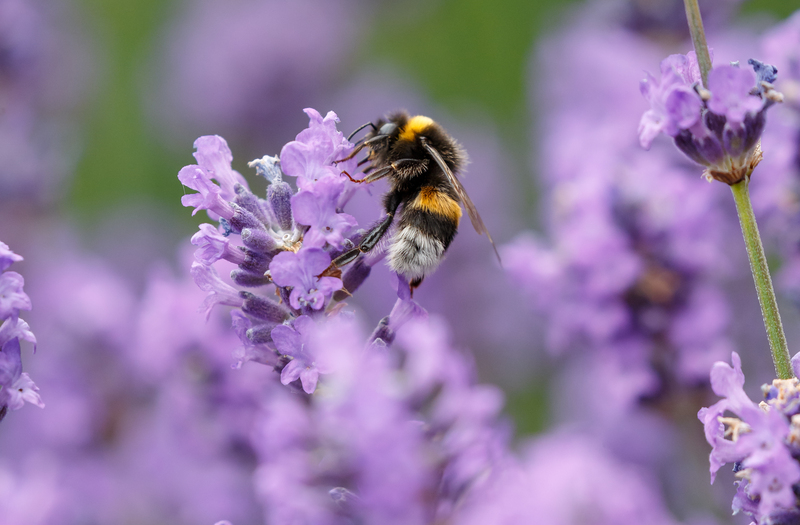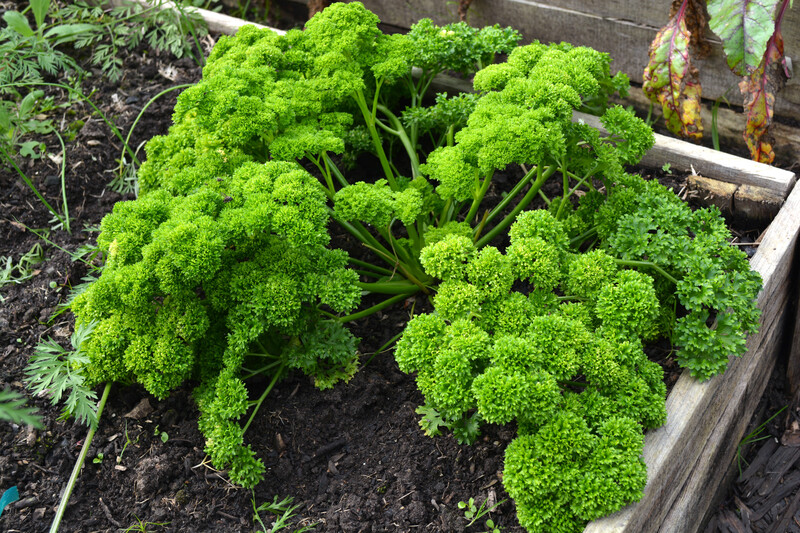Best Dwarf Evergreen Trees for Enchanting Small Gardens
Are you dreaming of transforming your small garden into a year-round sanctuary bursting with color and foliage? Dwarf evergreen trees are a perfect solution! With their lush, persistent greenery and compact habit, these enchanting trees provide structure, privacy, and interest--no matter the season or size of your outdoor space. In this comprehensive guide, discover the most beautiful dwarf evergreen trees for small gardens, tips for their care, creative design ideas, and everything you need to make your miniature landscape truly magical.
Why Choose Dwarf Evergreen Trees for Small Gardens?
Smaller gardens can sometimes feel restrictive, but choosing the right plants can turn these challenges into opportunities. Dwarf evergreen trees offer many benefits for compact outdoor spaces:
- Year-round beauty: Their persistent foliage ensures your garden looks vibrant even in winter.
- Easy to Maintain: Dwarf varieties require less pruning and generally remain within manageable sizes.
- Versatile Design Options: Fit them into containers, borders, or use as striking focal points.
- Privacy and Shelter: Create green screens and cozy outdoor nooks without overshadowing your space.
- Wildlife Friendly: Many dwarf evergreens provide food and shelter for birds and pollinators.
Choosing the Right Evergreen Variety
Selecting the ideal dwarf evergreen tree for your small garden depends on several factors, including climate, soil, garden style, and maintenance preferences. Whether you're drawn to classic conifers, flowering broadleaf evergreens, or unique shapes and textures, there's a compact option for every taste.

Top 10 Dwarf Evergreen Trees for Small Gardens
Here is a curated list of the best dwarf evergreen trees that will grow gracefully in petite plots, pots, or even rooftop gardens:
1. Dwarf Alberta Spruce (Picea glauca 'Conica')
- Height/Spread: Grows slowly to 6-8 feet tall and 3-4 feet wide
- Highlights: Dense, pyramidal shape with soft, bright green needles; perfect for symmetrical planting or stylish containers
- Care: Prefers full sun and well-drained soil; hardy in zones 3-6; slow-growing nature means minimal pruning
2. Japanese Holly (Ilex crenata 'Sky Pencil')
- Height/Spread: 4-10 feet tall, but so narrow (2-3 feet) that it's ideal for tight spots
- Highlights: Upright, columnar growth--excellent for adding vertical interest and structure to small gardens
- Care: Adapts to part shade or sun; tolerates pruning; drought tolerant once established
Tip: Use 'Sky Pencil' as a living accent by entryways, terraces, or flanking a path.
3. Dwarf Hinoki Cypress (Chamaecyparis obtusa 'Nana Gracilis')
- Height/Spread: 3-8 feet tall and 2-5 feet wide
- Highlights: Unique, dark green, shell-shaped foliage lends a delicate look; prized in Japanese gardens and among bonsai enthusiasts
- Care: Thrives in moist, well-drained soil; prefers partial shade; low maintenance
4. Little Gem Magnolia (Magnolia grandiflora 'Little Gem')
- Height/Spread: 8-15 feet tall and 6-8 feet wide
- Highlights: Compact form with glossy evergreen leaves and large, fragrant white flowers in summer
- Care: Full sun to part shade; prefers well-drained, acidic soil; regular watering in dry weather
If you want a flowering evergreen specimen, 'Little Gem' is a show-stopper!
5. Mugo Pine (Pinus mugo var. pumilio)
- Height/Spread: 3-5 feet tall, with a broader, spreading habit
- Highlights: Hardy conifer with dark green needles and rugged charm; great for rock gardens and slopes
- Care: Drought-tolerant; thrives in full sun and poor soil; extremely low maintenance
Did you know? The mugo pine is a favorite for wind-swept, alpine-inspired gardens.
6. Dwarf Blue Spruce (Picea pungens 'Globosa')
- Height/Spread: 3-5 feet high and wide
- Highlights: Globe-shaped, with striking silvery-blue needles; acts as a stunning focal point
- Care: Prefers full sun; tolerates urban pollution well; slow growth means it holds its shape naturally
7. Boxwood (Buxus sempervirens 'Suffruticosa')
- Height/Spread: Typically 2-4 feet tall and wide
- Highlights: Dense, rounded evergreen ideal for clipping into topiary or hedging; produces rich, glossy foliage
- Care: Partial shade to sun; regular trimming keeps shapes crisp; easy to grow in pots or borders
Consider boxwood for classic garden style or a formal touch in miniature spaces.
8. Dwarf Southern Yew (Cephalotaxus harringtonia 'Prostrata')
- Height/Spread: Grows to 2-3 feet tall, spreading 4-5 feet wide
- Highlights: Soft, arching, dark green needles; shade tolerant and deer resistant
- Care: Thrives in shade to partial sun; excellent for underplanting or groundcover in woodland settings
9. Dwarf Mountain Laurel (Kalmia latifolia 'Minuet')
- Height/Spread: Just 2-3 feet tall and 3-4 feet wide at maturity
- Highlights: Evergreen broadleaf shrub with dramatic pink and white spring blooms; native hybrid ideal for small spaces
- Care: Loves acidic, moist, well-drained soil; best in part shade
10. Dwarf Eastern Hemlock (Tsuga canadensis 'Jeddeloh')
- Height/Spread: 2-3 feet tall, forming a neat mound
- Highlights: Graceful, finely textured needles and a nest-like growth habit
- Care: Prefers cool, moist soil; benefits from some afternoon shade
How to Select Dwarf Evergreens for Your Garden
- Assess your garden's microclimate: Pay attention to sun, wind, and shade levels where you plan to plant.
- Soil matters: Most evergreens prefer well-drained soil; amend clay or sand as needed.
- Space planning: Look at the mature width as well as height to avoid crowding.
- Maintenance level: Some, like boxwood, enjoy pruning, while others, such as dwarf blue spruce, maintain their form naturally.
- Style compatibility: Choose evergreens that suit your garden vibe--modern, cottage, oriental, or wild woodland.
Design Ideas for Using Dwarf Evergreen Trees
An enchanting small garden is all about clever design. Here are some creative ways to incorporate dwarf evergreens into your outdoor space:
- Container Gardens: Many dwarf evergreens thrive in pots. Use them as living sculptures on patios, balconies, or terraces.
- Low Hedges and Borders: Compact boxwoods or hollies create neat lines and definition.
- Entry Accents: Flank doorways or paths with matching pairs for a formal, welcoming look.
- Rock and Alpine Gardens: Pine and cypress varieties complement stones and gravel beautifully.
- Winter Interest: Combine textures and colors--mix blue spruce with gold-toned evergreens and feathery hemlocks.
- Living Privacy Screens: Columnar forms like 'Sky Pencil' make perfect natural partitions.
- Focal Points: Use a single specimen in a prime viewing spot for dramatic effect.
Planting and Caring for Dwarf Evergreen Trees
Proper planting and care are essential to keep your dwarf evergreen trees healthy and thriving. Follow these expert tips to ensure your garden stays enchanting all year round:
Planting Tips
- Choose the right spot: Be mindful of sun, shade, and nearby plants.
- Dig the hole twice as wide as the root ball: This allows roots to spread easily.
- Add organic matter: Mix compost into backfill soil for improved drainage and nutrition.
- Plant at the correct depth: The root flare (where trunk widens) should be just above the soil surface.
- Water well: Give a thorough soak after planting. Keep moist but not soggy through establishment.
Ongoing Care
- Watering: Deep, infrequent watering is best once established--especially in dry spells.
- Mulching: Add a 2-3 inch layer of bark or wood chips to conserve moisture and suppress weeds.
- Feeding: Use a slow-release, balanced fertilizer for evergreens each spring if necessary.
- Pruning: Most dwarf evergreens need little pruning, but occasional light shaping helps maintain their form and remove dead wood.
- Protection: In cold climates, shield young plants from harsh winter winds or scorching afternoon sun.
Common Problems and Solutions
- Yellowing needles: Can signal overwatering or poor drainage; improve soil or move container plants to drier spots.
- Faded color: Some varieties may lose their vibrancy in too much shade or nutrient-starved soil--add compost and adjust placement.
- Pests and diseases: Watch for signs of scale, mites, or fungal problems--treat early with eco-friendly sprays and keep plants healthy.

Frequently Asked Questions About Dwarf Evergreens
How fast do dwarf evergreen trees grow?
Most dwarf evergreens grow slowly, adding less than 6-12 inches per year. This makes them perfect for small spaces--no need to worry about rapid overgrowth or excessive pruning.
Will dwarf evergreens stay small forever?
While "dwarf" means a slower-growing and smaller plant, all trees increase in size with age. Still, most best small evergreen trees for gardens will remain compact for decades, especially with light pruning and right placement.
Can I keep dwarf evergreen trees in pots?
Yes! Many dwarf evergreens thrive in large containers, adding structure to patios or balconies. Be sure containers have good drainage, and water more frequently than in-ground plantings.
Which dwarf evergreens are best for shade?
- Dwarf yew (Cephalotaxus)
- Dwarf mountain laurel (Kalmia)
- Dwarf hemlock (Tsuga)
These versatile evergreens tolerate dappled or full shade, making them ideal for urban gardens with limited sun.
Conclusion: Add Magic to Your Garden with Dwarf Evergreens
Whether your space is a tiny backyard, balcony, or entrance courtyard, adding dwarf evergreen trees can truly enchant your small garden. With their year-round structure, varied textures, and easy care, they bring a touch of natural artistry to any landscape. Choose your favorites from our list, and start creating your own pocket-sized evergreen paradise today!
Remember, the best dwarf evergreen trees for small gardens are those that suit your style, thrive in your climate, and bring you joy throughout the seasons. Happy planting!